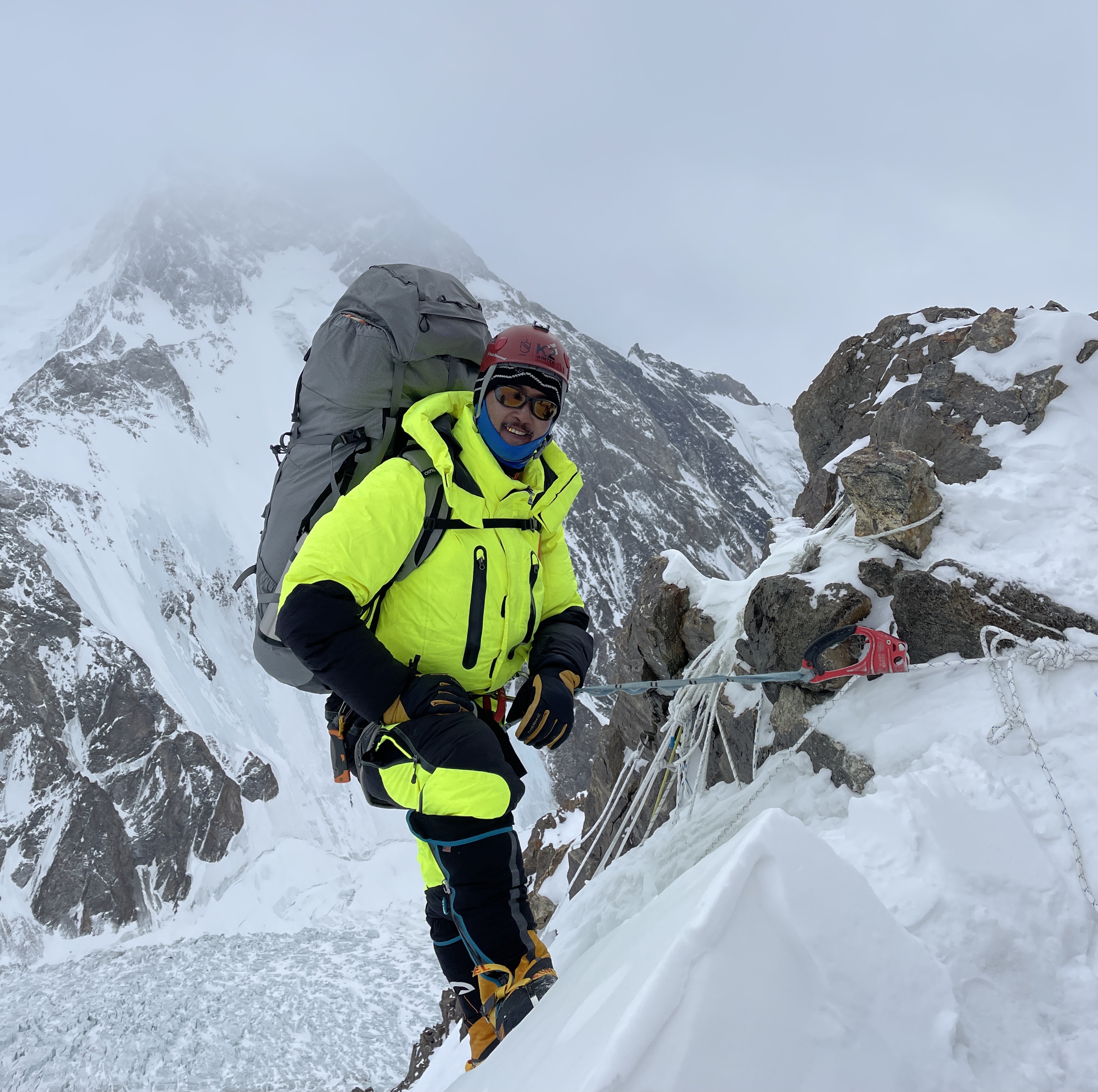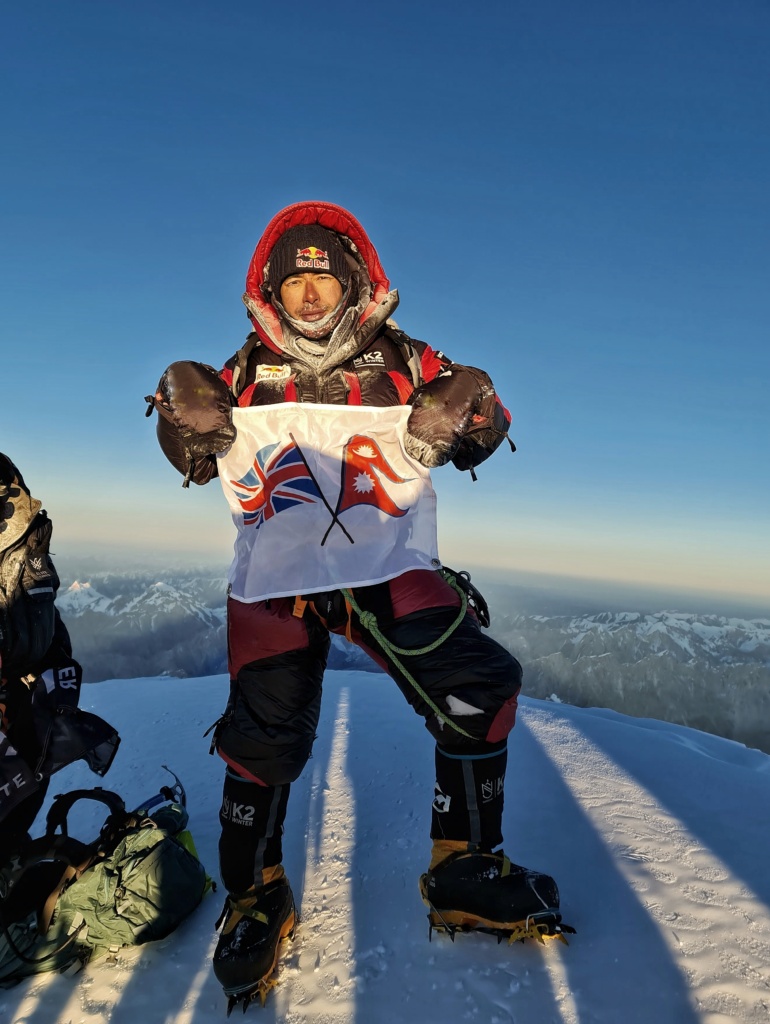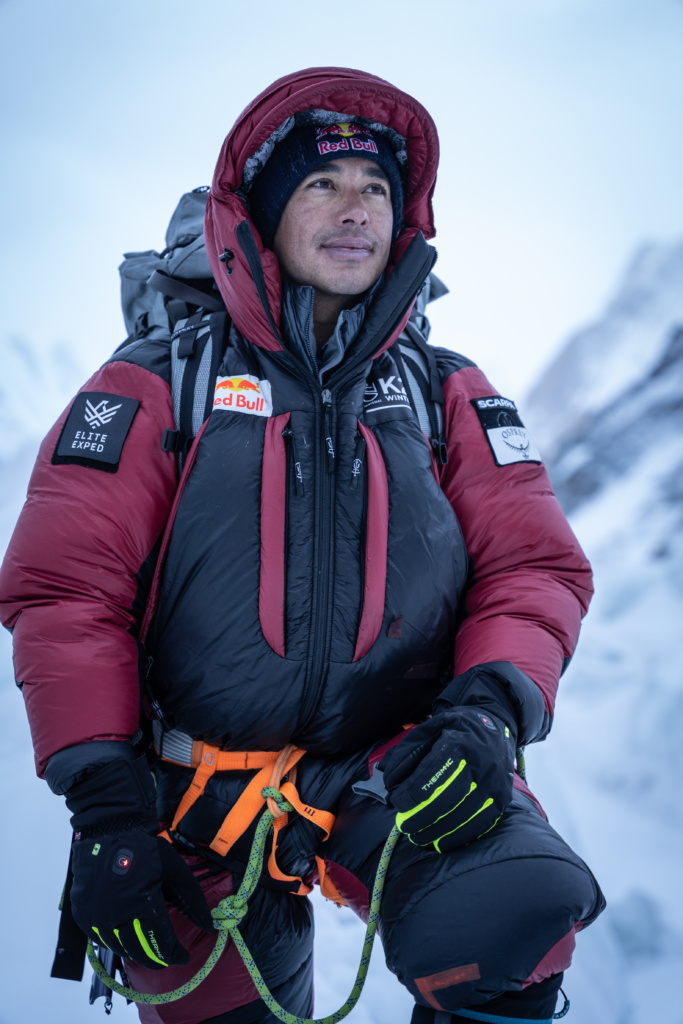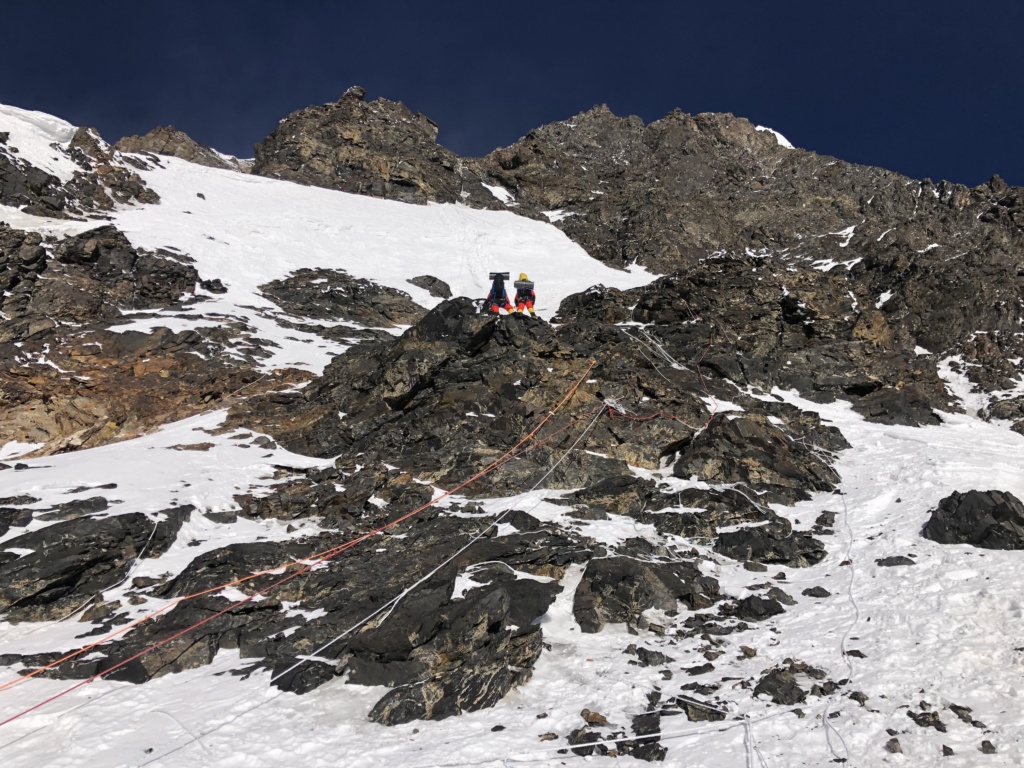K2 in winter had posed a formidable challenge for mountaineers around the world. Ten Nepalis pulled off the impossible in the winter of 2021.

First published: https://www.hindustantimes.com/lifestyle/travel/drawn-to-scale-meet-the-all-nepali-team-that-just-made-history-on-k2-101613737210914.html
Drawn to scale: Meet the all-Nepali team that just made history on K2
Amid stormy weather and raging winds, 10 men who had arrived as competing teams decided to unite and attempt K2 in winter. As they linked arms at the summit and took those final steps together, they achieved what had for decades been considered impossible in the world of mountaineering.
In the last week of 2020, a group of Nepali climbers got together for a meeting in the unlikeliest of places, at around 7,000 metres on K2 (8,611m), the second-highest mountain in the world. The frozen world around them seemed to have come to a standstill in the dead of winter.
Mingma Gyalje Sherpa’s team of Kili Pemba Sherpa and Dawa Tenjing Sherpa was trying to fix lines on a sketchy, icy section just below Camp 3, the second-last stop before the summit. They were greeted by Nirmal Purja and Mingma Tenzi Sherpa, who were part of a six-man, also-all-Nepali team.
The men talked briefly at the tops of their voices, against the howling wind. They joined hands to patch another section with ropes.
Both teams had the same goal — to be the first to summit K2 in winter. But at this point they were still racing each other to the top. Then, at base camp on December 31, as they drank and danced together, ringing in the new year in a way that most of the pandemic-afflicted world far below them could not, a crucial decision was made. The competition would be a thing of the past. They would join forces and work as one team. In that moment, they determined the future of their audacious attempt.
A few days later, they found another ally in Sona Sherpa, who was part of a team that was laying the ground for a future climb by a Seven Summit Treks team. That took the total to 10 Nepali men, about to attempt to make history.
At 4.45pm on January 16, they did. The 10 climbers marched to the summit of K2 in unison, singing their national anthem. The last major challenge in the world of mountaineering had been overcome.
***
What is it that makes K2 so impossible to climb in winter?
“In winter, the base camp [at K2] is as cold as Camp 3 is in summer,” says Mingma Tenzi, 36, who was part of this historic summit, also summited K2 in 2018 and has climbed nine of the world’s fourteen 8,000-metre-plus mountains.

on the final section to the summit.
Temperatures on K2 can plummet to -30 degrees Celsius in peak winter, with raging winds blowing at up to 65 kmph making it feel more like -60. Conditions on the mountain demand that you move fast to beat the chill. But features on the mountain seem designed to keep you from doing this. There is, for instance, the Bottleneck — a perilous gully of about 100 metres that runs under an overhang of ice seracs, threatening to dislodge at any moment. Eleven climbers were killed here in 2008, attempting a summit during the regular season.
“On the mountain, it’s also a lot of mixed climbing — ice, rock, ice, rock. There is a greater chance of rockfall as well. It’s all very different in winter,” says Tenzi.
By contrast, Everest was first summited in winter in 1980, by a team from Poland. The Poles, known for attempting what few others dared on mountains then, made the winter ascent of the world’s highest peaks their mission. After Everest, Polish climbers featured on teams that made nine other first-ever winter ascents, while mixed international teams climbed three other summits.
K2 remained elusive, even though the first winter attempt on it was made in 1987. In winter, there are few windows of good weather on K2. Climbers need to make gradual progress to acclimatise to the altitude, but if they acclimatise too long they no longer have the energy for the winter climb itself. So many groups have realised too late that they spent too much time and energy acclimatising, says Ralf Dujmovits, 59, a German mountaineer who has been to K2 five times and summited once, in 1994.
Other times, regular bouts of inclement weather keep climbers stuck at base camp, waiting for good weather that never arrives. To put this weather in perspective, in 2012, a Polish mountaineer named Adam Bielecki pulled off the first winter ascent of Gasherbrum I (8,080m), the 11th-highest mountain in the world, which sits not too far from K2. The winds at the summit were so strong he couldn’t even pull out his flag. The summit at Gasherbrum I is at about the altitude of Camp 4 on K2, with another 600 metres of vertical climbing left, from there to the top.
It is those final 600 metres, alongside the weather conditions, that make K2 such a challenge, even in regular season. “Even the strongest and most experienced climbers couldn’t make it to the summit, so K2 was considered impossible in the winter,” Dujmovits says.
***
All climbing activity in Nepal and Pakistan during regular season (typically June to August) was cancelled in 2020 because of the Covid-19 pandemic. The Nepali high-altitude workers who make a living helping climbers up these mountains earned nothing through the year.
“I spent all my savings in the five or six months of lockdown. Sherpas aren’t trained to do other jobs. It was a difficult time. I had no choice but to go to K2,” says Gelje Sherpa, 28, one of the summiteers.
For generations of Sherpas, climbing has been a livelihood first, then a chance at glory. Few Sherpas through history have got the credit they are due. Which is why the K2 winter summit was even more of a mission — it would be a first-of-its-kind record by an all-Nepali team.
For the daredevil Nirmal Purja, there was no question. If such an attempt were being made, he had to be part of it. Purja, 37, is a former Gurkha soldier who served in Afghanistan in 2007, was then selected for the Special Boat Service, an elite force of the British Royal Navy, and was cooling his heels back home after pulling off an incredulous feat — in 2019, he climbed all 14 of the world’s 8,000ers, in six months and six days.
He put everything on hold to be part of this historic attempt. He’d planned to attempt K2 in winter in 2022. “With so many climbers thinking of going, I made the decision just two months prior and put a lot of things together real quick — funds, team, supplies. We wanted K2 in the name of the Nepalese,” Purja says. His team would eventually, including him, number six.

in just six months and six days.
Mingma Gyalje, who had summited K2 twice before, toyed with a similar idea and drew a lot of interest from the community. But with few willing to invest in the project, he dug into his savings and came up with $60,000 (nearly ₹44 lakh) of his own for the expedition.
He also started a crowd-funding campaign and was able to raise around $8,000 (about ₹5.5 lakh ) as incentive for his three climbing partners. Still, one of them dropped out days before their departure for Pakistan. It was way too risky. The families of the others worried for them too, but they decided to go ahead. It wasn’t just the money. There was pride and glory at stake.
I didn’t tell my parents until a week before leaving. They yelled at me, tried everything to convince me not to go. They were really unhappy when I was leaving,” Gyalje says.
With each passing day in November, the climbing community was abuzz with other climbers announcing their aspirations to attempt K2 in winter. The biggest team came from Seven Summit Treks (SST), comprising 26 members that also featured a few Nepalis. For armchair mountaineering enthusiasts, the stage was set for a gripping winter drama.
***
On December 18, Gyalje’s team reached base camp. He’d been here just a year earlier, but had to call off the climb after waiting two weeks for the weather to clear. By the time he met Purja below Camp 3, his team had already finished fixing ropes on the lower half on the mountain, and had set up Camps 1 and 2.
Purja and the five climbers with him — Tenzi, Gelje, Mingma David Sherpa, Dawa Temba Sherpa and Pem Chirri Sherpa — arrived at base camp on December 26 and set off up the mountain the very next day.
“We didn’t go there to make a comfortable base camp and gradually settle in. Our priorities were clear, this was a mission. When we have good weather, we climb,” Purja says.
The idea was to rapidly acclimatise to the altitude while also fixing rope along the way. It came with repercussions — Purja for instance had three fingers on the verge of being frost-nipped, a ‘big mind game’ before the summit push.
SST too committed three members to fix lines, but after two of them got severely frostbitten, Sona Sherpa decided to join forces with the other nine from the two all-Nepali teams. With two of his teammates injured, Sona couldn’t have fixed lines for other SST climbers alone. So SST dedicated him to the all-Nepali team, since they needed lines fixed all the way to the summit too, for their other team members to make an attempt in the weeks ahead.
For eight days at the start of January, the men hunkered down at base camp as a storm raged outside. They went up to inspect their camps once the winds abated. They found Camp 2 ravaged and a lot of equipment lost — tents, sleeping bags, mats, stove, food rations. “We had to manage without quite a few things. It was a bit of a mess, but I believe in always having a backup plan for a backup plan,” Purja says.

Extra loads were lugged up the mountain to restock the camp just in time for a good weather window. The idea now was to continue fixing rope higher up on the mountain and eventually gear up for the summit push. The first team left on January 13, while the second followed a day later.
At 9 am on January 15, Gyalje, Tenzi, David and Sona set off from Camp 3 to fix lines to Camp 4 (around 8,000m). They followed the regular summer route up the Abruzzi Spur, but were stopped short each time by crevasses or overhangs. What should have taken them a couple of hours stretched into eight, and they returned to Camp 3 exhausted.
“We tried three different routes and had to come down almost till Camp 3 and move left on the Cesen Route to finally figure a route to Camp 4. It was a tough day,” says Gyalje.
***
Ten men suffering summit fever sat at Camp 3 that evening. Just four of the lot had been to the summit of K2 before. Now, a few were struggling in the cold and the strong winds, experiencing early signs of frostbite on hands, toes and face. But there was no looking back. At 1am, the tents came to life and an hour later, all 10 set out for the top.
“With winds of around 35kmph, I think the temperature would have been about -65 degrees Celsius. It was cold even in the double-down suit that I was wearing,” Tenzi says.
He felt strong despite the gruelling previous day. But he knew the odds were stacked against them, as they always were on this mountain he’d now developed a sort of aversion to, after five unsuccessful attempts.
A few of the men with him were also first-timers above Camp 4 and didn’t know the route. “If we had alternated the person who was fixing the route, it would have further delayed our progress and we would have eventually summited in the dark. So I decided to keep at it myself,” Tenzi says.
Once they reached Camp 4, he and his belayer Dawa Tenjing, took on the onus of laying out the rope all the way to the summit. The rest followed in their footsteps, a few at the end of their tether.
“My feet were cold and I really thought that I would have to cut off my toes. At one point, I couldn’t take it anymore and was ready to quit. When I reached out to my teammates higher up, their radios were fortunately off. I had no choice but to continue going up,” Gyalje says.

As the sun came out, their bodies warmed up and things got better. It was almost as if the mountain was permitting their progress. The team picked up pace.
“We are all Nepalese brothers, driven by the same mission — a desire to create history for our community. Everybody’s name would be remembered at the same time and in the same breath. It was a powerful message to the world about what can be achieved through hard work and unity,” Purja says.
What they did next, a few metres below the summit, was highly improbable at that altitude. Those in the lead waited for the others to join them. The wind picked up once they regrouped, but there was no stopping them now. They made their final ascent arm in arm, showing the world yet again what small men with big hearts are capable of pulling off on mighty mountains.
WHAT MAKES K2 SO DIFFICULT
The difficulties on K2 begin with the approach to base camp. It is a gruelling hike of a week through rugged terrain that sees big dumps of snow and cold winds in winter, as well as a walk up the Baltoro Glacier.
In comparison, the approach to base camps at Everest and Annapurna are relatively easy, with villages and tea houses dotting the route.
K2 is located further north than the other 8,000ers in Nepal and is subject to constant bad weather and strong jet streams, some of the strongest winds in the atmosphere.
Camp 4 on K2 is pitched at around 8,000 metres, which means a vertical gain of 600 metres on the summit push that features technical climbing on hard ice in sub-zero temperatures.
Historic moments on mountain
1954: The Italians make the first ascent of K2 after Achille Compagnoni and Lino Lacedelli reach the summit.
1977: The second ascent of K2 is made by a Japanese team that also features the first local climber, a Pakistani named Ashraf Aman.
1986: Wanda Rutkiewicz of Poland becomes the first woman to climb K2. Two other women, Julie Tullis of England and Liliane Barrard, also make it to the top, but die on the descent alongside 11 other climbers who succumbed that season. This remains the worst toll on K2 in a single season.
2008: Eleven climbers are killed on the mountain over two days.
2011: Gerlinde Kalternbrunner of Austria becomes the first woman to climb all 14 of the world’s 8,000ers without supplementary oxygen after making it to the summit of K2.
2018: Andrzej Bargiel of Poland becomes the first person to ski down the mountain in July, during the regular season.
THE KILLER MOUNTAIN
Mountain climber and chronicler Alan Arnette, writing on his website, puts the difficulty of climbing K2 in perspective thus: By 2012, K2 had seen 306 successful summits and 81 deaths, with a deaths-to-summits ratio of 26.47%. In comparison, Everest registered 6,208 summits and 257 deaths, with a deaths-to-summits ratio of 4.14%.
CHALLENGES THAT REMAIN
With the last remaining 8,000er now summited in winter, mountaineers will look to chase unclimbed lines and traverses. The Fantasy Ridge on Everest, a traverse of Everest-Lhotse-Nuptse and a complete traverse of other mountains like Kangchenjunga and Annapurna will be a major draw.
Lightweight, rapid ascents without supplementary oxygen will continue to push climbers to their limits, especially on routes that few have attempted in the past.
For the sheer level of difficulty that winter climbs pose, they too will continue to be a big draw for elite climbers.